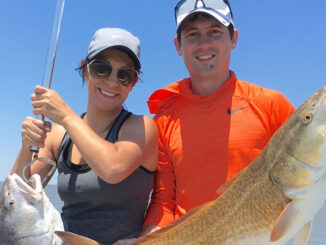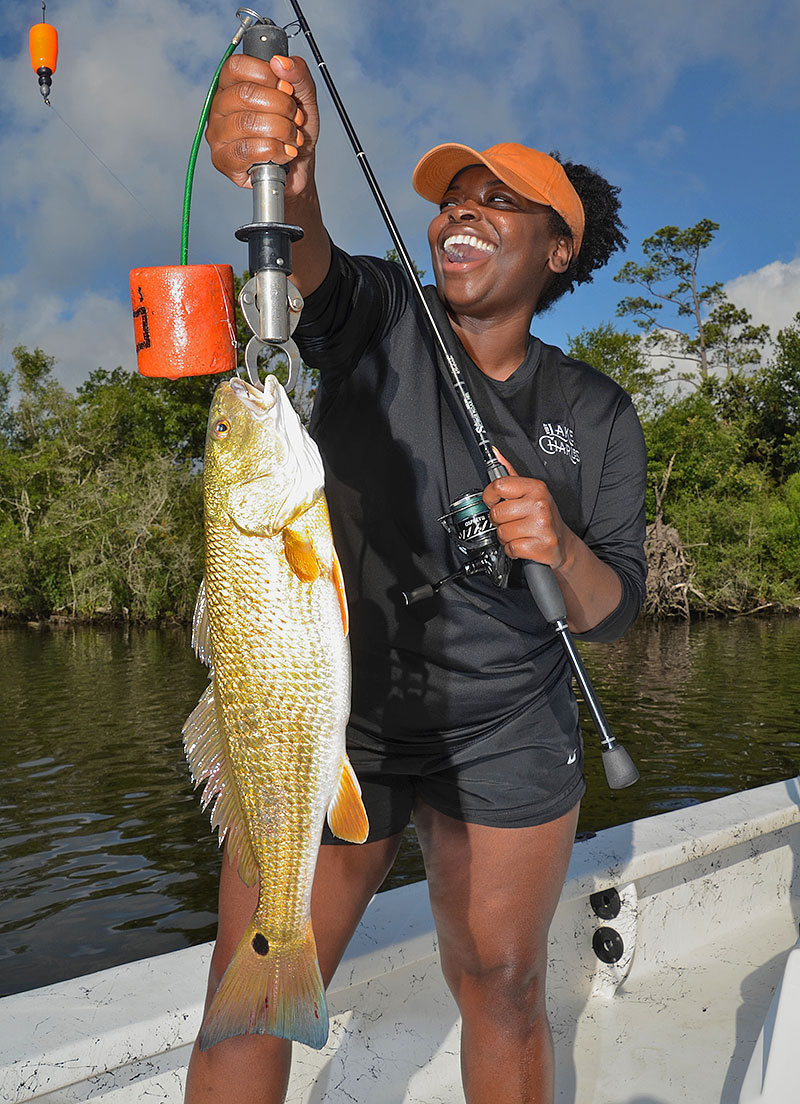
Calcasieu channel ledges offer choice of summer spots over specks
Most anglers head to Calcasieu Lake south of Lake Charles to catch huge speckled trout. Indeed, the lake has produced many giant specks over the years, but anglers can catch another big spotted fish, or at least one with a spot on each side of its tail.
“The Calcasieu Estuary has great redfish action,” said Brian Hanchey with Louisiana Backwater Charters, (337-660-6594, louisianabackwatercharters.com) who runs a lodge on the Calcasieu Ship Channel in Hackberry. “In August and September and through the fall, we catch a lot of redfish.”
Known locally as Big Lake, Calcasieu Lake anchors the southern end of the estuary. The shallow, oyster-studded lake measures about 12 miles long by nine miles wide and covers about 52,700 acres.
If Calcasieu Lake creates the heart of the estuary, the Calcasieu Ship Channel forms its spine. A deeper, wider, straighter version of the old Calcasieu River, it runs 40 miles from the port of Lake Charles to the Gulf of Mexico, passing through Lake Charles, Prien Lake and Moss Lake. It tangentially touches Big Lake. Several bayous and small tributaries feed the system, creating an enormous, rich fishery.
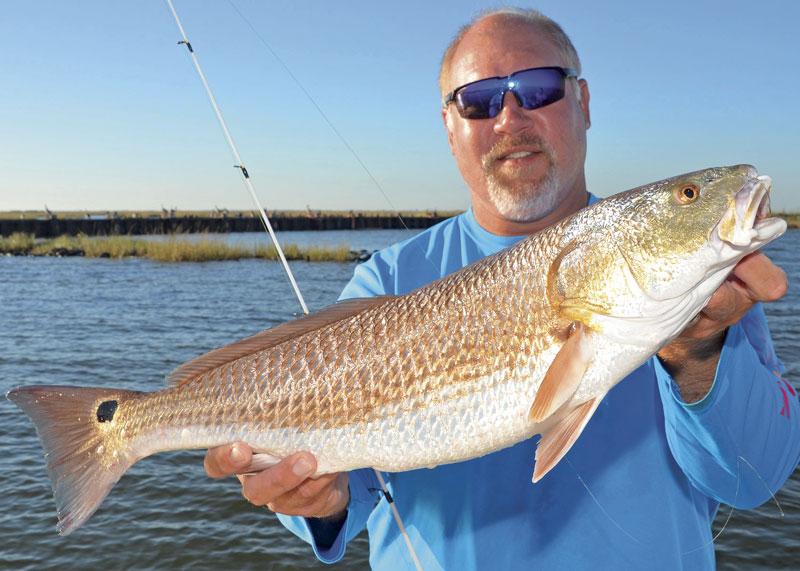
Entire estuary is prime
From the extremely northern part down to the gulf, the entire estuary can provide great opportunities for spot-tailed thunder. South of the Saltwater Barrier at Westlake, redfish feed around points and some small grassy islands. Fishing heats up when current flows through the area. Even north of the barrier, bass anglers fishing the Calcasieu River commonly catch redfish.
Lake Charles, the waterbody, covers nearly 1,000 acres. Many people fish from the seawall on the northeast side in downtown Lake Charles, the city. In the late summer and fall, the water usually runs salty. Outside the channel, the lake averages five to six feet deep. An excavation hole about 200 yards off the seawall opposite the Lake Charles Civic Center plunges more than 50 feet deep.
The old Calcasieu River channel once looped through Prien Lake. Now, the lake opens into the ship channel through some cuts. Flats and Bayou d’Inde west of Prien Lake can provide good fishing. Once a freshwater system before the ship channel came through, fishing in this area more resembles bass fishing than salty action. Anglers catch reds off fallen trees and stumps with lures like spinnerbaits or spoons.
“In Prien or Moss Lake, redfish get on the ledges in the channel during the summer,” Hanchey said. “That’s a good place to catch redfish in August or September. They will hang in six to seven feet of water dropping into 12 feet. I like to throw Carolina rigs baited with pogies.”
Inside Big Lake, many people fish the reefs or points. Sometimes, big schools of marauding redfish roam through the lake terrorizing baitfish. The shoreline along the land strip between the lake and the channel offers a good area to look for reds, but most people fish the grassy eastern and southern shores of Big Lake.
The East Cove Unit of Cameron Prairie National Wildlife Refuge preserves nearly 15,000 acres of marshes east of the lake. Weirs block the mouths of some bayous. At times, boaters can pass through to the marshes behind the weirs. Even when blocked, the weirs by Grand and Lambert bayous usually provide good fishing. Tide and bait still flow through the gates.
“In the fall, redfish will be in the southeast corner of Calcasieu Lake around the weirs,” Hanchey said. “The Grand and Lambert Bayou weirs usually have a lot of redfish around them.”
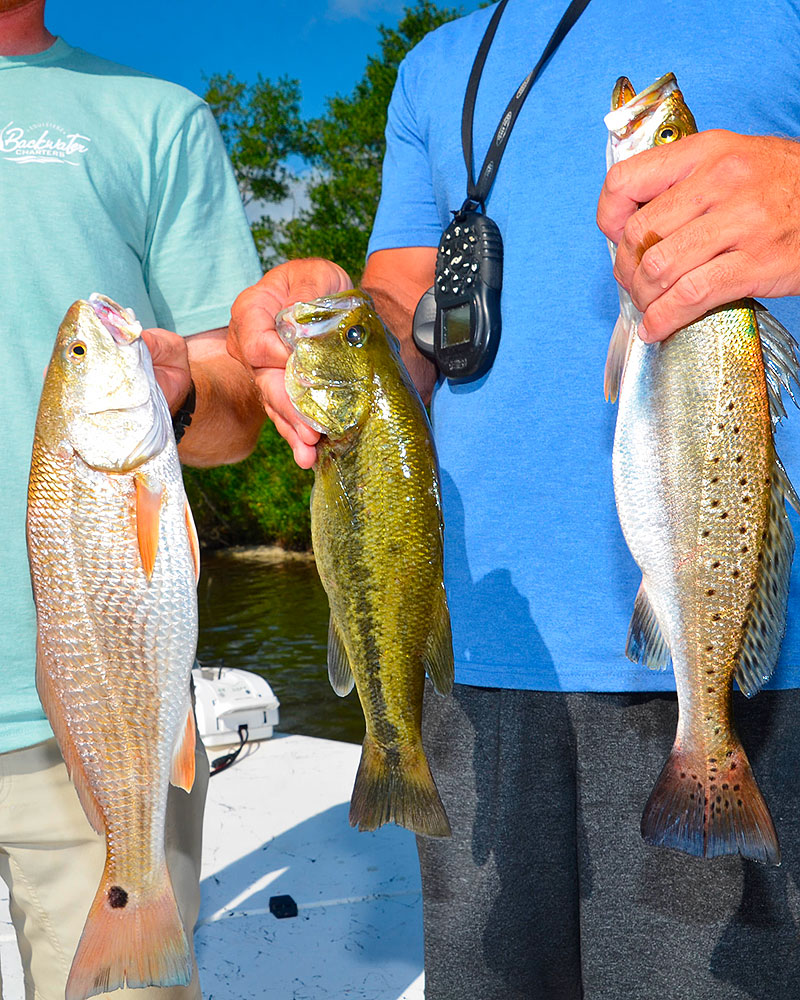
Don’t skip the marshes
Across the ship channel from the southwest corner of Big Lake, West Cove thrusts westward into the marshes near Hackberry. Many people fish around Rabbit Island, an uninhabited grassy bird roost in the cove. South of Big Lake, Oyster Bayou runs through a marsh that holds good redfish.
“The Calcasieu Estuary has great redfish action, especially in the spring and early summer,” Hanchey said. “West Cove is a great place to fish for reds in the fall, especially around Rabbit Island. We catch many redfish by sight-fishing with plastics. If we don’t see them, we’ll work the bank throwing shrimp under a cork. Usually, I throw a ¼-ounce jighead with a Down South soft-plastic bait or a Boom Boom Shrimp under a Four Horseman popping cork.”
Kelso Bayou flows eastward from Black Lake to the ship channel near Hackberry. A maze of canals, bayous and structures in this area provide great redfish habitat. The Salt Ditch runs northward through marshes and connects the Gulf Intracoastal Waterway to the Black Lake area.
“The waters around Black Lake are very good for redfish and other saltwater species,” said Tom Adams, Jr. of Fishing Tom Guide Service, (318-675-9114, www.fishingtom.net) who runs lodges in Sulphur.
The Intracoastal bisects the ship channel just north of Big Lake and connects to Sabine Lake on the Louisiana-Texas line. South of the Intracoastal, Sabine NWR conserves about 125,000 acres of marshes, lakes and bayous between the lakes. People can fish the refuge from March 15 to Oct. 15 each year.
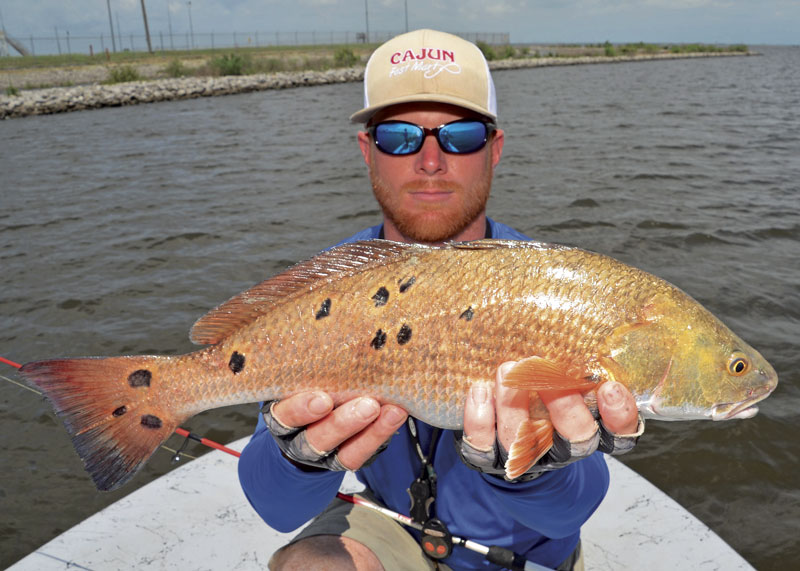
Check Black for reds
Black Bayou flows through the northwestern portion of those marshes. It averages eight to 10 feet deep. Some holes drop to 14 feet deep. Anglers can also fish the Vinton Drainage Ditch, which crosses the Intracoastal. The East Cut connects Sabine Lake to Black Bayou. Several pockets and cuts along the waterway also hold redfish.
“The Black Bayou area can produce excellent redfish action,” Adams said. “It usually has moving water. Redfish like to hang out in the holes as water temperatures cool in the fall.”
Many anglers fish popping-cork rigs in the marshes. Set the cork to suspend the bait slightly above the bottom. Live shrimp might attract anything including largemouth bass. Anglers also fish live minnows, dead shrimp or soft-plastic shrimp or minnow imitations under corks.
“In September and into the fall, we fish the grass lines with live shrimp under a popping cork,” Adams said. “We routinely catch both saltwater and freshwater species in the marshes. We’ve caught up to 15 species in a day. When we drop a live shrimp into the water, it’s always a surprise what we bring up!”
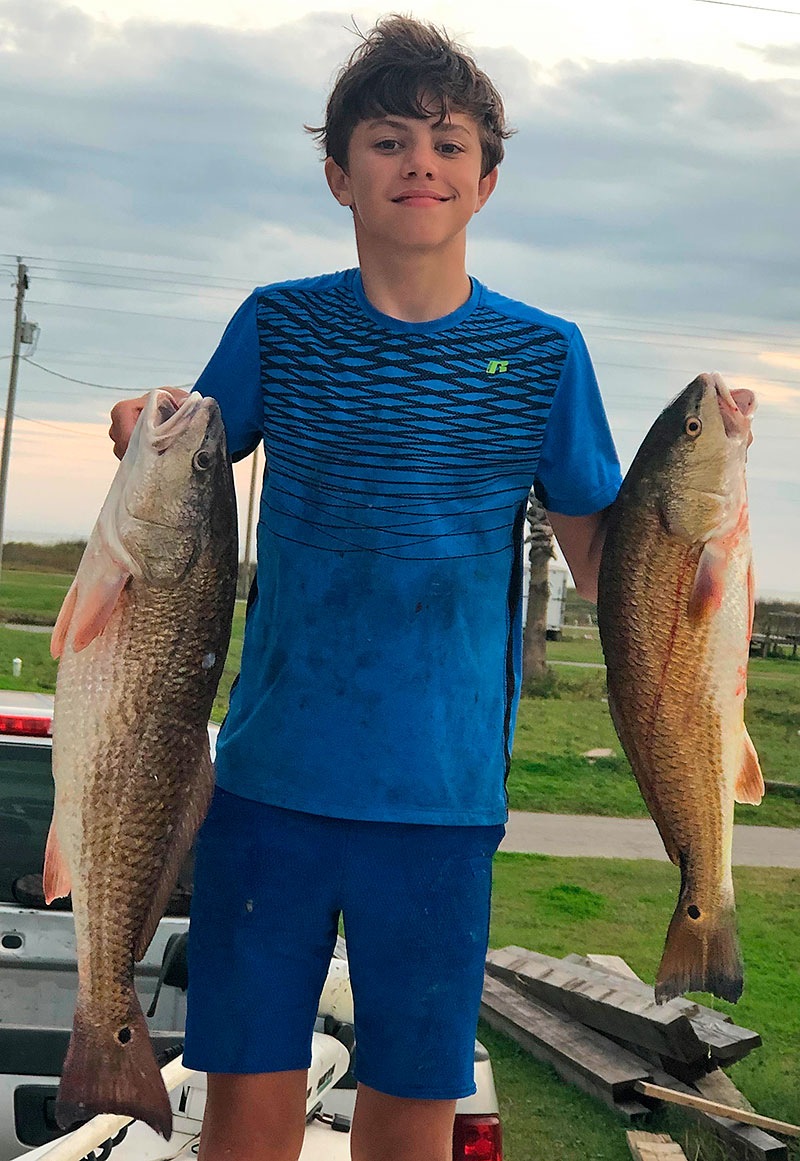
Fish the Jetties
For the biggest redfish, head to the Calcasieu Pass jetties. Two parallel rock structures jut into the gulf for approximately one nautical mile, marking the entrance to the ship channel. In late summer and early fall, monster spot-tails congregate in great numbers near the rocks to gorge themselves on baitfish and anything else they can devour.
“In the summer, I fish the Cameron jetties,” said Erik Rue of Calcasieu Charter Service (337-598-4700, calcasieucharters.com) in Grand Lake. “When the fish are on, it can be really great down there. I free-line live pogies or put one or two small split-shots on the line and let it drift.”
In late summer and early fall, massive redfish gather in enormous spawning schools around Calcasieu Pass and off the nearby beaches. The incoming tide carries the eggs and tiny hatchlings into the marshes where they grow up.
“In August and September, we’ll see schools of 300 to 400 bull redfish running along the edge of the beach,” Hanchey said. “When they school like that, they’ll eat just about anything. We throw topwater baits. My favorite is a Rapala Skitter Walk in pink or chartreuse day glow.”
Anglers also use live croakers, whole crabs, crab halves or cut fish. Live mullets about four to eight inches long make excellent bull redfish bait. Fish these on a Carolina rig. Use only as much weight as necessary to keep the bait on the bottom.
“In August, we catch many big bull reds by the jetties,” Hanchey said. “We’ll catch ladyfish and cut them up for bait. Redfish love them! We fish them on a Carolina rig with a ½-ounce egg weight and a bead on it and a 5/0 kahle hook.”
At the end of the jetties, the water drops to about 20 feet deep. Inside the rocks, the dredged channel plunges to about 70 feet. Anglers typically fish outside the rocks during an outgoing tide and inside the rocks on a rising tide.
“For redfish, I like an outgoing tide,” Hanchey said. “If the current is really strong coming through the channel, I’ll fish outside the jetties. If current is slow and I can get the bait to the bottom, I’ll fish inside the jetties. Also in the channel, if we see rocks coming off from the flats, we’ll fish there. If the water is pretty, I’ll fish closer to the beach. When the water is dirty, I’ll fish by the end of the jetties.”
Always watch for large ships. Ships make huge wakes. When a ship prepares to transit the pass, get out of the way. Also watch for Pinky, the famed pink dolphin. She might show up anywhere, but usually likes to play in the bow waves of large ships running the channel.
For lodging and guide services, also contact Grosse Savanne Lodge (337-598-2357, www.grossesavanne.com) or Hackberry Rod and Gun (888-762-3391, www.hackberryrodandgun.com).
People might want to stay at newly renovated cabins at Sam Houston Jones State Park (www.lastateparks.com) just north of Lake Charles. For area information, contact the Lake Charles Conventions and Visitors Bureau at (337-436-9588 or www.visitlakecharles.org.
